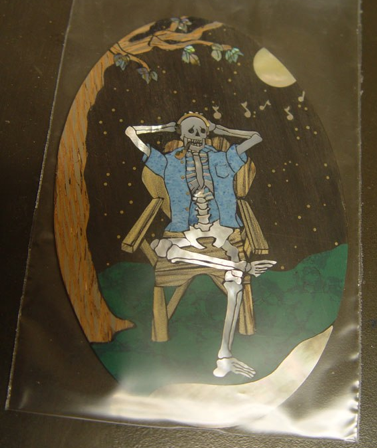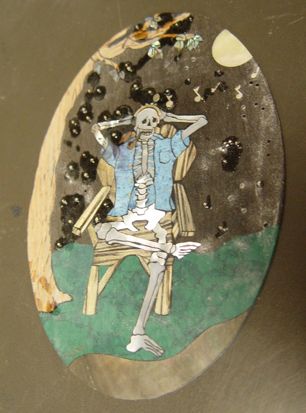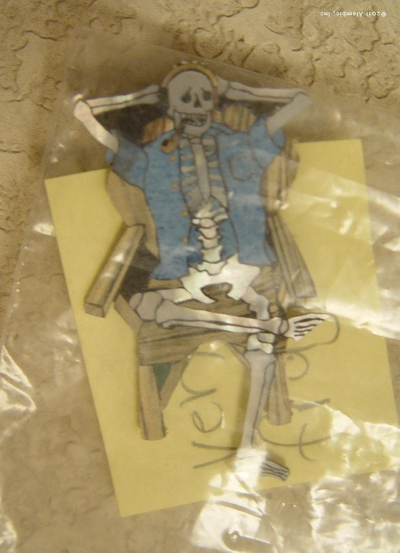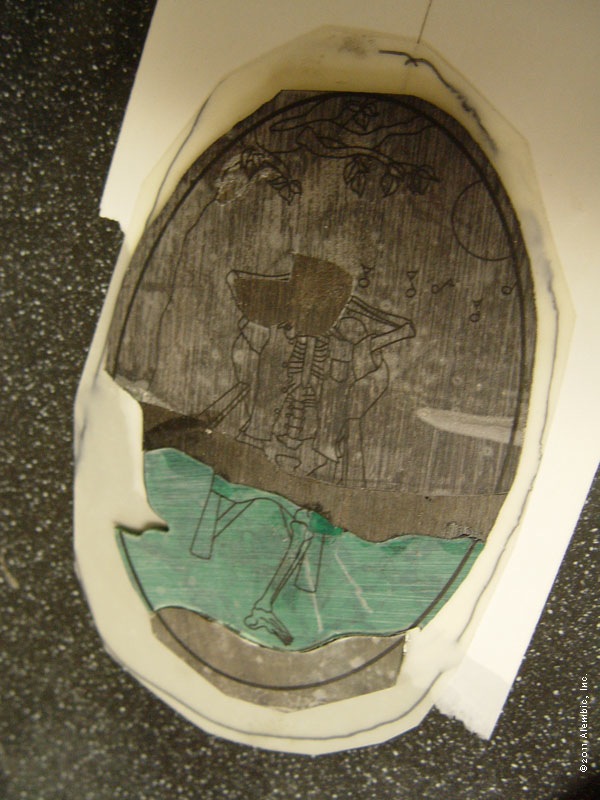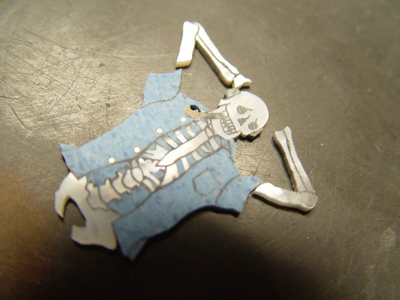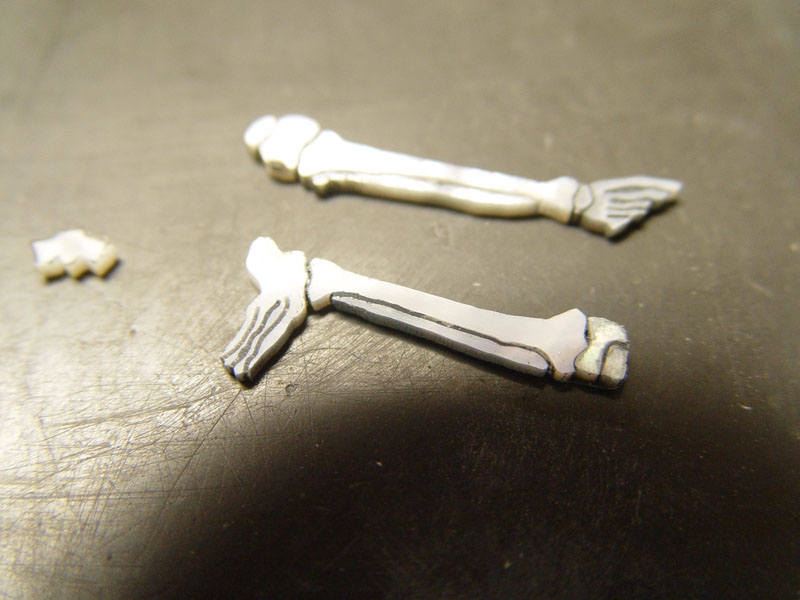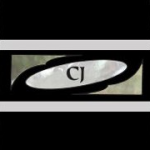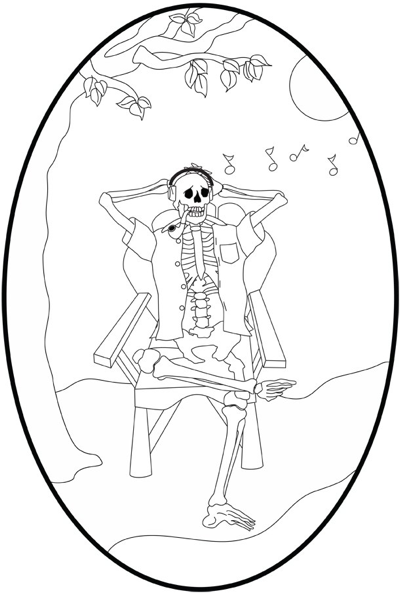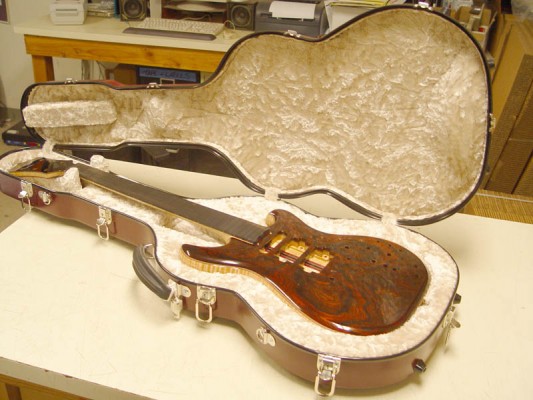Hi everyone, and thanks for checking out our new home!
With everyone’s MobileMe account expiring at the end of June (thank you, Apple), it became necessary to find a new, permanent home for this blog. So with a little help from WordPress, here we are!
There has been SO MUCH going on behind the scenes at Alembic in the six months since my last post. The guitar would have been done and in my hands by now, had it not been for a very special addition to the guitar. I have asked them to do something they’ve never done before, and it has required them to get some new tools as well as come up with a method for implementing my idea. To do this, Alembic had to build a crude mock-up of the medallion to represent the materials of the real thing – including the many layers of finish, which takes time to create. Then, they work on the test piece to find a way to bring my idea to reality without damaging the surrounding materials… like a master thief obsessively running through his plan, leaving no stone unturned in an effort to not compromise the real job.
This has taken a long time, but we are about a week away from “getting it done,” so I thought this was a good time to move the blog over. This step has been the biggest exercise in patience yet, but I have been assured that it is the last bump in the road. After this is done and the medallion is safely in the guitar, everything else will progress quickly. I even have assurances that I will have the guitar in time for some upcoming projects!
What keeps me sane is the knowledge that the entire team at Alembic has only my best interests in mind as they have methodically figured out new ways of doing things – all the time keeping the medallion safe from the many attempts of project execution that would have caused irreversible damage.
I anticipate having new pictures in the very near future, so please check back regularly!

